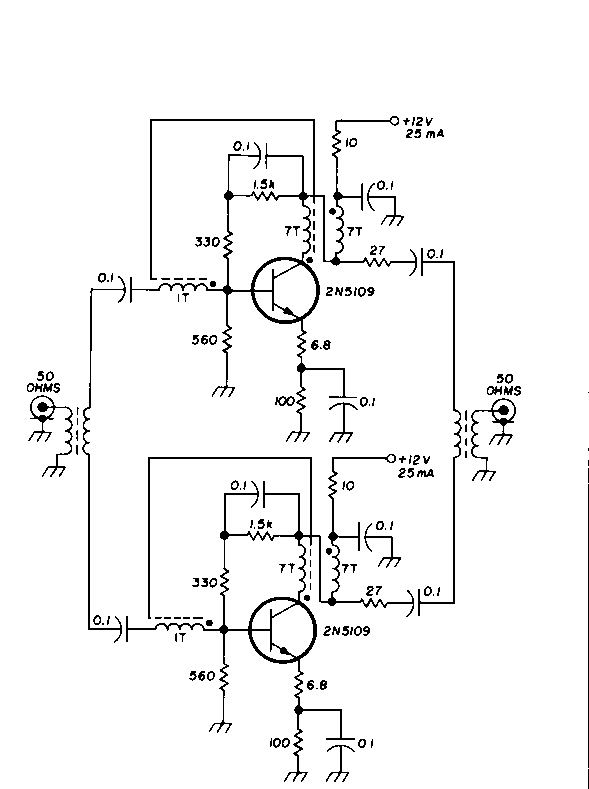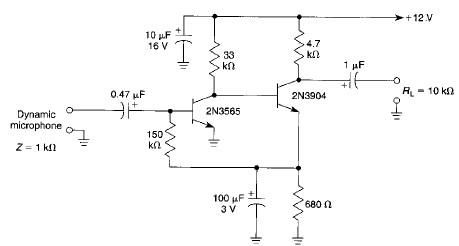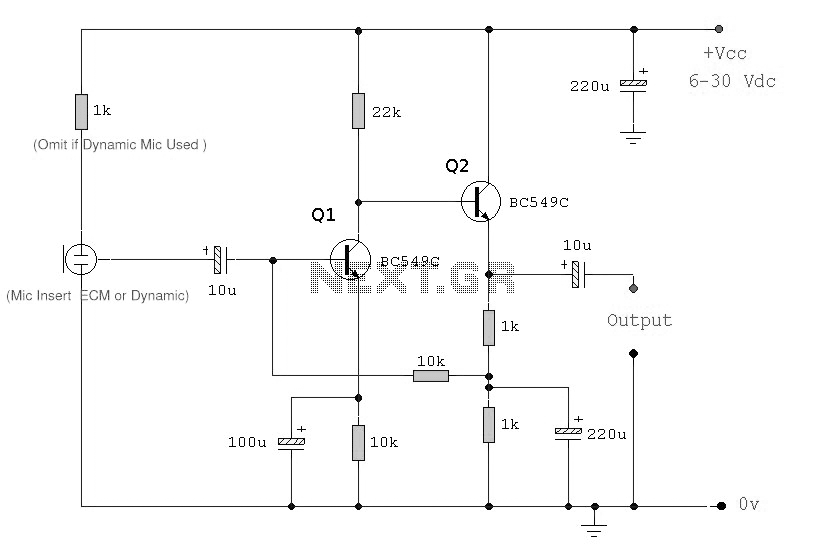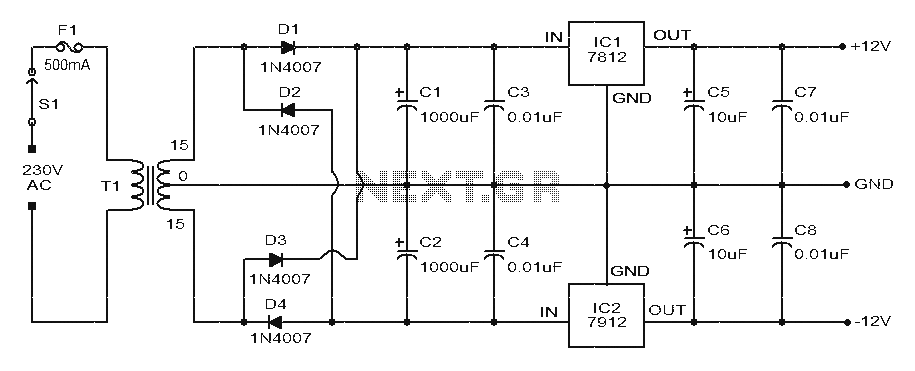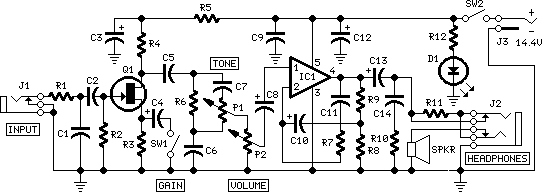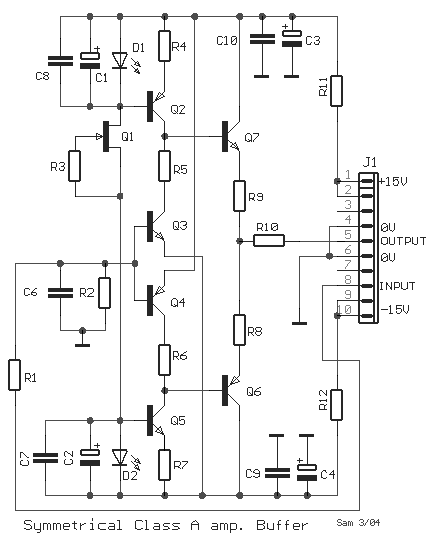
Wide bandwidth low noise amplifier

Parasitic input capacitance (ICi) is 3pF for LM5S, LF156, and LF157, along with any additional layout capacitance. This interacts with the feedback element and creates undesirable high-frequency effects. To mitigate this, a capacitor (C2) should be added in conjunction with resistor R2, forming an RC network.
Parasitic input capacitance (ICi) plays a critical role in the performance of integrated circuits such as the LM5S, LF156, and LF157. The specified capacitance of 3pF, combined with additional layout capacitance, can significantly affect the circuit's behavior, particularly in high-frequency applications. This interaction with feedback elements can lead to instability and undesirable frequency response characteristics.
To address these challenges, it is advisable to implement a compensatory network consisting of an additional capacitor (C2) and a resistor (R2). This RC network serves to filter out high-frequency noise and stabilize the circuit by creating a low-pass filter effect. The value of R2 should be chosen based on the desired cutoff frequency, which is determined by the formula:
\[ f_c = \frac{1}{2\pi R_2 C_2} \]
where \( f_c \) is the cutoff frequency, \( R_2 \) is the resistance in ohms, and \( C_2 \) is the capacitance in farads. By carefully selecting these components, the circuit designer can effectively minimize the adverse effects of parasitic capacitance and enhance the overall performance of the circuit.
When designing the layout, it is crucial to consider the physical placement of components to further reduce parasitic effects. Keeping traces short and using proper grounding techniques can help mitigate additional capacitance and inductance introduced by the PCB layout. Overall, a comprehensive approach that includes both component selection and layout optimization is essential for achieving reliable high-frequency performance in circuits utilizing these integrated circuits.ParMitic input capacitance ICi I 3pF tor LM5S, LF 156, and LF157 plut any additional layout capacitance) interact With iMdback element and create undirabia high frequency pot To add C2 luch that: R2C-2 s ft ICl.
Parasitic input capacitance (ICi) plays a critical role in the performance of integrated circuits such as the LM5S, LF156, and LF157. The specified capacitance of 3pF, combined with additional layout capacitance, can significantly affect the circuit's behavior, particularly in high-frequency applications. This interaction with feedback elements can lead to instability and undesirable frequency response characteristics.
To address these challenges, it is advisable to implement a compensatory network consisting of an additional capacitor (C2) and a resistor (R2). This RC network serves to filter out high-frequency noise and stabilize the circuit by creating a low-pass filter effect. The value of R2 should be chosen based on the desired cutoff frequency, which is determined by the formula:
\[ f_c = \frac{1}{2\pi R_2 C_2} \]
where \( f_c \) is the cutoff frequency, \( R_2 \) is the resistance in ohms, and \( C_2 \) is the capacitance in farads. By carefully selecting these components, the circuit designer can effectively minimize the adverse effects of parasitic capacitance and enhance the overall performance of the circuit.
When designing the layout, it is crucial to consider the physical placement of components to further reduce parasitic effects. Keeping traces short and using proper grounding techniques can help mitigate additional capacitance and inductance introduced by the PCB layout. Overall, a comprehensive approach that includes both component selection and layout optimization is essential for achieving reliable high-frequency performance in circuits utilizing these integrated circuits.ParMitic input capacitance ICi I 3pF tor LM5S, LF 156, and LF157 plut any additional layout capacitance) interact With iMdback element and create undirabia high frequency pot To add C2 luch that: R2C-2 s ft ICl.
